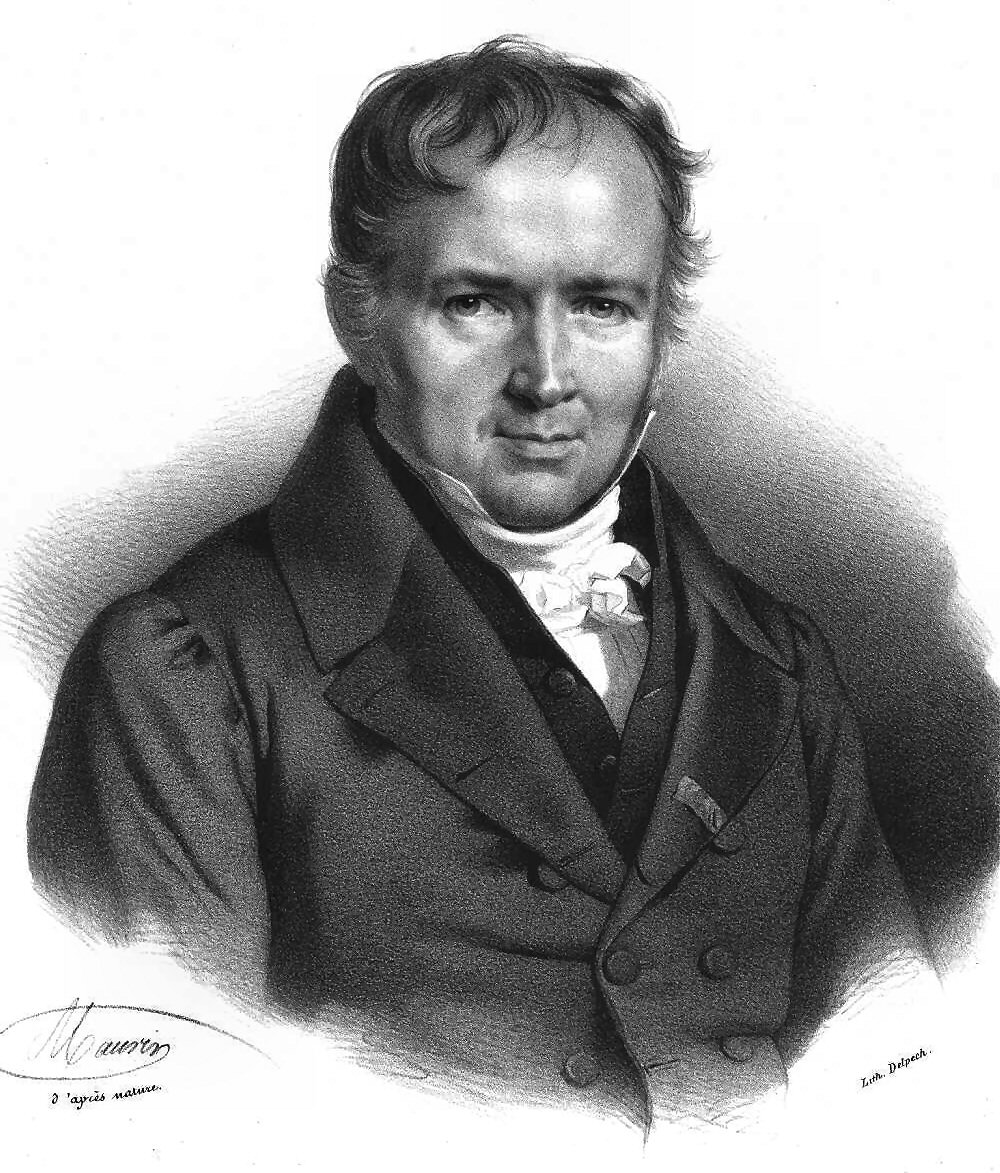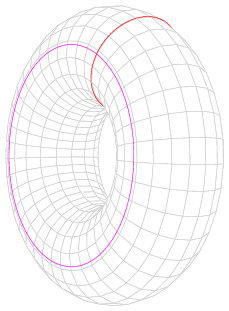|
Symplectomorphism
In mathematics, a symplectomorphism or symplectic map is an isomorphism in the category of symplectic manifolds. In classical mechanics, a symplectomorphism represents a transformation of phase space that is volume-preserving and preserves the symplectic structure of phase space, and is called a canonical transformation. Formal definition A diffeomorphism between two symplectic manifolds f: (M,\omega) \rightarrow (N,\omega') is called a symplectomorphism if :f^*\omega'=\omega, where f^* is the pullback of f. The symplectic diffeomorphisms from M to M are a (pseudo-)group, called the symplectomorphism group (see below). The infinitesimal version of symplectomorphisms gives the symplectic vector fields. A vector field X \in \Gamma^(TM) is called symplectic if :\mathcal_X\omega=0. Also, X is symplectic if the flow \phi_t: M\rightarrow M of X is a symplectomorphism for every t. These vector fields build a Lie subalgebra of \Gamma^(TM). Here, \Gamma^(TM) is the set of smooth vec ... [...More Info...] [...Related Items...] OR: [Wikipedia] [Google] [Baidu] |
Hamiltonian Mechanics
In physics, Hamiltonian mechanics is a reformulation of Lagrangian mechanics that emerged in 1833. Introduced by Sir William Rowan Hamilton, Hamiltonian mechanics replaces (generalized) velocities \dot q^i used in Lagrangian mechanics with (generalized) ''momenta''. Both theories provide interpretations of classical mechanics and describe the same physical phenomena. Hamiltonian mechanics has a close relationship with geometry (notably, symplectic geometry and Poisson structures) and serves as a Hamilton–Jacobi equation, link between classical and quantum mechanics. Overview Phase space coordinates (''p'', ''q'') and Hamiltonian ''H'' Let (M, \mathcal L) be a Lagrangian mechanics, mechanical system with configuration space (physics), configuration space M and smooth Lagrangian_mechanics#Lagrangian, Lagrangian \mathcal L. Select a standard coordinate system (\boldsymbol,\boldsymbol) on M. The quantities \textstyle p_i(\boldsymbol,\boldsymbol,t) ~\stackrel~ / are called ''m ... [...More Info...] [...Related Items...] OR: [Wikipedia] [Google] [Baidu] |
Poisson Bracket
In mathematics and classical mechanics, the Poisson bracket is an important binary operation in Hamiltonian mechanics, playing a central role in Hamilton's equations of motion, which govern the time evolution of a Hamiltonian dynamical system. The Poisson bracket also distinguishes a certain class of coordinate transformations, called '' canonical transformations'', which map canonical coordinate systems into other canonical coordinate systems. A "canonical coordinate system" consists of canonical position and momentum variables (below symbolized by q_i and p_i, respectively) that satisfy canonical Poisson bracket relations. The set of possible canonical transformations is always very rich. For instance, it is often possible to choose the Hamiltonian itself \mathcal H =\mathcal H(q, p, t) as one of the new canonical momentum coordinates. In a more general sense, the Poisson bracket is used to define a Poisson algebra, of which the algebra of functions on a Poisson manifold is a ... [...More Info...] [...Related Items...] OR: [Wikipedia] [Google] [Baidu] |
Canonical Transformation
In Hamiltonian mechanics, a canonical transformation is a change of canonical coordinates that preserves the form of Hamilton's equations. This is sometimes known as ''form invariance''. Although Hamilton's equations are preserved, it need not preserve the explicit form of the Hamiltonian itself. Canonical transformations are useful in their own right, and also form the basis for the Hamilton–Jacobi equations (a useful method for calculating conserved quantities) and Liouville's theorem (itself the basis for classical statistical mechanics). Since Lagrangian mechanics is based on generalized coordinates, transformations of the coordinates do not affect the form of Lagrange's equations and, hence, do not affect the form of Hamilton's equations if the momentum is simultaneously changed by a Legendre transformation into P_i = \frac\ , where \left\ are the new co‑ordinates, grouped in canonical conjugate pairs of momenta P_i and corresponding positions Q_i, for i = 1, ... [...More Info...] [...Related Items...] OR: [Wikipedia] [Google] [Baidu] |
Pseudogroup
In mathematics, a pseudogroup is a set of homeomorphisms between open sets of a space, satisfying group-like and sheaf-like properties. It is a generalisation of the concept of a transformation group, originating however from the geometric approach of Sophus Lie to investigate symmetries of differential equations, rather than out of abstract algebra (such as quasigroup, for example). The modern theory of pseudogroups was developed by Élie Cartan in the early 1900s. Definition A pseudogroup imposes several conditions on sets of homeomorphisms (respectively, diffeomorphisms) defined on open sets of a given Euclidean space or more generally of a fixed topological space (respectively, smooth manifold). Since two homeomorphisms and compose to a homeomorphism from to , one asks that the pseudogroup is closed under composition and inversion. However, unlike those for a group, the axioms defining a pseudogroup are not purely algebraic; the further requirements are related to the pos ... [...More Info...] [...Related Items...] OR: [Wikipedia] [Google] [Baidu] |
Augustin Banyaga
Augustin Banyaga (born March 31, 1947) is a Rwandan-born American mathematician whose research fields include symplectic topology and contact geometry. He is currently a Professor of Mathematics at Pennsylvania State University. Biography While at the University of Geneva, he earned a B.S. degree in 1971 and an M.S. in 1972. He earned his Ph.D. degree in 1976 at the University of Geneva under the supervision of André Haefliger. (Banyaga was the first person from Rwanda to obtain a Ph.D. in mathematics.) He was a member of the Institute for Advanced Study in Princeton, New Jersey (1977–1978), Benjamin Peirce Assistant Professor at Harvard University (1978–1982), and assistant professor at Boston University (1982–1984), before joining the faculty at Pennsylvania State University in 1984 as associate professor. He was promoted to full professor in 1992. In 2009 Banyaga was elected a Fellow of the African Academy of Sciences, and in 2015 he was named a Distinguished S ... [...More Info...] [...Related Items...] OR: [Wikipedia] [Google] [Baidu] |
Isomorphism
In mathematics, an isomorphism is a structure-preserving mapping or morphism between two structures of the same type that can be reversed by an inverse mapping. Two mathematical structures are isomorphic if an isomorphism exists between them. The word is derived . The interest in isomorphisms lies in the fact that two isomorphic objects have the same properties (excluding further information such as additional structure or names of objects). Thus isomorphic structures cannot be distinguished from the point of view of structure only, and may often be identified. In mathematical jargon, one says that two objects are the same up to an isomorphism. A common example where isomorphic structures cannot be identified is when the structures are substructures of a larger one. For example, all subspaces of dimension one of a vector space are isomorphic and cannot be identified. An automorphism is an isomorphism from a structure to itself. An isomorphism between two structures is a ... [...More Info...] [...Related Items...] OR: [Wikipedia] [Google] [Baidu] |
Symplectic Manifold
In differential geometry, a subject of mathematics, a symplectic manifold is a smooth manifold, M , equipped with a closed nondegenerate differential 2-form \omega , called the symplectic form. The study of symplectic manifolds is called symplectic geometry or symplectic topology. Symplectic manifolds arise naturally in abstract formulations of classical mechanics and analytical mechanics as the cotangent bundles of manifolds. For example, in the Hamiltonian formulation of classical mechanics, which provides one of the major motivations for the field, the set of all possible configurations of a system is modeled as a manifold, and this manifold's cotangent bundle describes the phase space of the system. Motivation Symplectic manifolds arise from classical mechanics; in particular, they are a generalization of the phase space of a closed system. In the same way the Hamilton equations allow one to derive the time evolution of a system from a set of differential equations ... [...More Info...] [...Related Items...] OR: [Wikipedia] [Google] [Baidu] |
Geodesics As Hamiltonian Flows
In mathematics, the geodesic equations are second-order non-linear differential equations, and are commonly presented in the form of Euler–Lagrange equations of motion. However, they can also be presented as a set of coupled first-order equations, in the form of Hamilton's equations. This latter formulation is developed in this article. Overview It is frequently said that geodesics are "straight lines in curved space". By using the Hamilton–Jacobi approach to the geodesic equation, this statement can be given a very intuitive meaning: geodesics describe the motions of particles that are not experiencing any forces. In flat space, it is well known that a particle moving in a straight line will continue to move in a straight line if it experiences no external forces; this is Newton's first law. The Hamiltonian describing such motion is well known to be H=p^2/2m with ''p'' being the momentum. It is the conservation of momentum that leads to the straight motion of a particle. On ... [...More Info...] [...Related Items...] OR: [Wikipedia] [Google] [Baidu] |
Betti Number
In algebraic topology, the Betti numbers are used to distinguish topological spaces based on the connectivity of ''n''-dimensional simplicial complexes. For the most reasonable finite-dimensional spaces (such as compact manifolds, finite simplicial complexes or CW complexes), the sequence of Betti numbers is 0 from some point onward (Betti numbers vanish above the dimension of a space), and they are all finite. The ''n''th Betti number represents the rank of the ''n''th homology group, denoted ''H''''n'', which tells us the maximum number of cuts that can be made before separating a surface into two pieces or 0-cycles, 1-cycles, etc. For example, if H_n(X) \cong 0 then b_n(X) = 0, if H_n(X) \cong \mathbb then b_n(X) = 1, if H_n(X) \cong \mathbb \oplus \mathbb then b_n(X) = 2, if H_n(X) \cong \mathbb \oplus \mathbb\oplus \mathbb then b_n(X) = 3, etc. Note that only the ranks of infinite groups are considered, so for example if H_n(X) \cong \mathbb^k \oplus \mathbb/(2), where \mat ... [...More Info...] [...Related Items...] OR: [Wikipedia] [Google] [Baidu] |
Energy
Energy () is the physical quantity, quantitative physical property, property that is transferred to a physical body, body or to a physical system, recognizable in the performance of Work (thermodynamics), work and in the form of heat and light. Energy is a Conservation law, conserved quantity—the law of conservation of energy states that energy can be Energy transformation, converted in form, but not created or destroyed. The unit of measurement for energy in the International System of Units (SI) is the joule (J). Forms of energy include the kinetic energy of a moving object, the potential energy stored by an object (for instance due to its position in a Classical field theory, field), the elastic energy stored in a solid object, chemical energy associated with chemical reactions, the radiant energy carried by electromagnetic radiation, the internal energy contained within a thermodynamic system, and rest energy associated with an object's rest mass. These are not mutual ... [...More Info...] [...Related Items...] OR: [Wikipedia] [Google] [Baidu] |
Simple Lie Group
In mathematics, a simple Lie group is a connected non-abelian Lie group ''G'' which does not have nontrivial connected normal subgroups. The list of simple Lie groups can be used to read off the list of simple Lie algebras and Riemannian symmetric spaces. Together with the commutative Lie group of the real numbers, \mathbb, and that of the unit-magnitude complex numbers, U(1) (the unit circle), simple Lie groups give the atomic "building blocks" that make up all (finite-dimensional) connected Lie groups via the operation of group extension. Many commonly encountered Lie groups are either simple or 'close' to being simple: for example, the so-called "special linear group" SL(''n'', \mathbb) of ''n'' by ''n'' matrices with determinant equal to 1 is simple for all odd ''n'' > 1, when it is isomorphic to the projective special linear group. The first classification of simple Lie groups was by Wilhelm Killing, and this work was later perfected by Élie Cartan. The final class ... [...More Info...] [...Related Items...] OR: [Wikipedia] [Google] [Baidu] |




